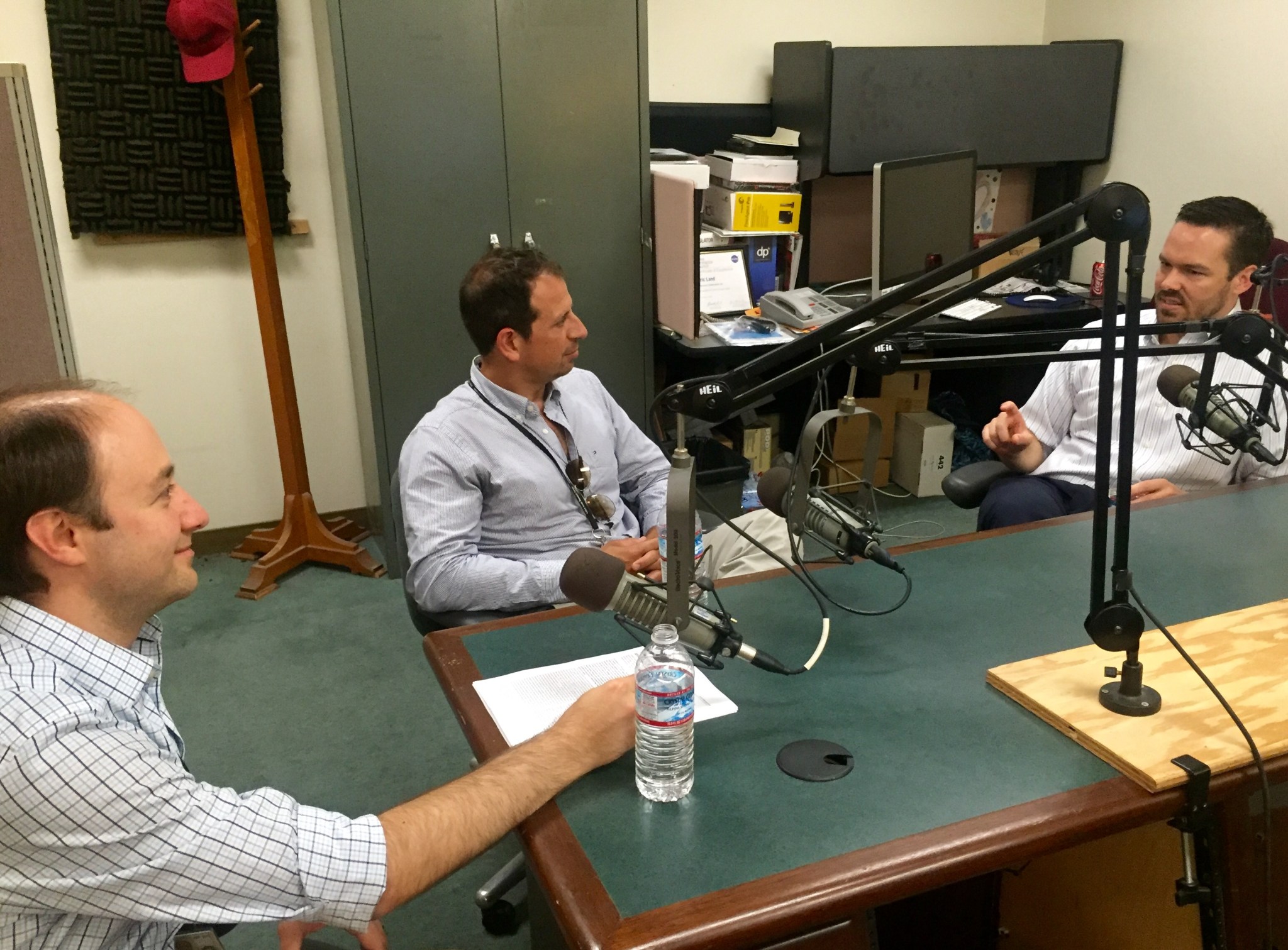
Tell us a little bit about where you’re from.
I’m from Chile. I grew up in Santiago de Chile, the capital. It’s a fairly large city: when I grew up it was 4 million people, now probably it’s around 7 million. It has a very similar climate to California, to LA especially more than to San Francisco. A lot of wine, cold water beaches, mountains. When I moved here to California, I felt like at home.
I grew up loving sports, doing mountaineering in the Andes, the beautiful mountains there. I’m a very outdoorsy person, I enjoy nature a lot. I also grew up trying to discover science on my own. I didn’t have a very science-oriented family, so I kind of pushed through on my own curiosity. I never used a telescope, but when I was twelve I saved money and I bought a small telescope. Actually, I came to the U.S. with my family to Miami, to visit, and by then I had saved all my weekly stipend that my mom would give me and I bought a telescope. I brought it back to Chile after the vacation, but I didn’t know how to use it. I tried randomly to figure it out, and finally, one day at 5 or 6 am I managed to aim it at Jupiter and I saw Jupiter with its moons and all that. You can imagine for a kid what that is, it was like a true discovery.
I think that my life, my progress from Chile all the way to here, has been characterized by the curiosity of self-learning, self-teaching, not taking anything for granted, and just going out there. Reference points are non-existent for me. It’s all about discovery.
Why did you choose to buy a telescope and not a microscope?
That’s a very good question, I think I have always been fascinated by the sky and the stars. In Chile the sky was better, you could see the Southern Cross, the galactic center, and I spent a lot of time on the mountains looking at the Milky Way. I was more connected to the sky than to a microscope and cells.
Tell us about your education and how it affected your educational pursuits.
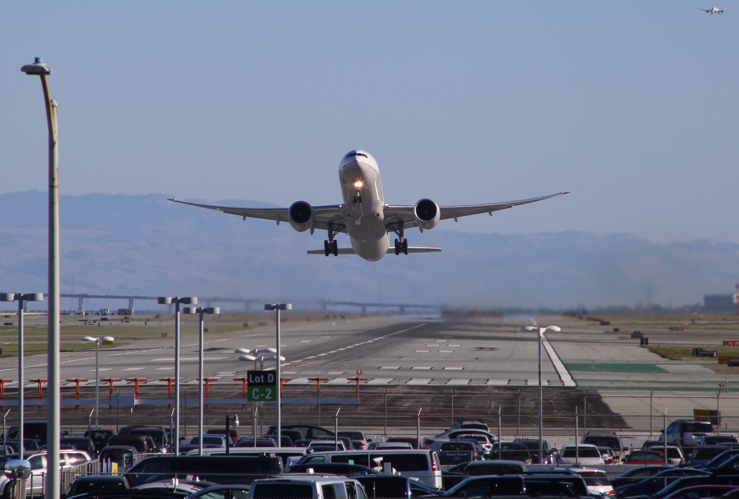
I must say that my first and strongest hobby wasn’t astronomy. It was airplanes. I’ve always been really fascinated by aviation, commercial, defense, everything, not just for the sake of the business or the work, but because of the technology. Planes are incredible, marvelous, feats of engineering. It’s pretty amazing to see what it takes to have a plane flying, to be efficient, or how it is driving all our technology. I’ve been, since a kid, fascinated by the performance, the speed, the ability to fly. I remember I was not yet ten years old and I would ask my dad to drive me to the airport to just watch the planes land. So, anyway, answering your question, my education.
Let me interject here though, that it would seem to me that you would want to be a pilot.
I did want to be a pilot. Actually, I applied to the Chilean Air Force. At that time they had F-5’s and were trying to buy F-16’s. I really wanted to be an F-16 pilot. That was my dream. But I had myopia, and they said: “you can [only] be ground personnel”. I said, “No way, I will study engineering, and [then] I will be a pilot later.” I actually did study engineering, started my own business, and then I became a private pilot much later.
Let me add a little piece to the story of my fascination with aviation. I was very interested in all these kinds of machines and planes, especially by aircraft carriers, such a combination of performance, landing and taking off on those tiny spaces. It turned out that we got a big new announcement in Chile: the Abraham Lincoln, which is the fourth nuclear-powered aircraft carrier, was doing it’s maiden trip from Norfolk, Virginia all the way to San Diego, to join one of the fleets in the Pacific. Since it couldn’t make it through the Panama Canal, it was going all the way around Punta Arenas, Cape Horn, and it is way north to San Diego so it would stop in Valparaiso, right next to Santiago. There were all kinds of news about it in Chile, like “the aircraft carrier is coming!”, “the latest technology!”. It was brand new because it was coming from Newport News shipyard. I was so excited about this thing. In my family, nobody cared but I was really excited about seeing it.
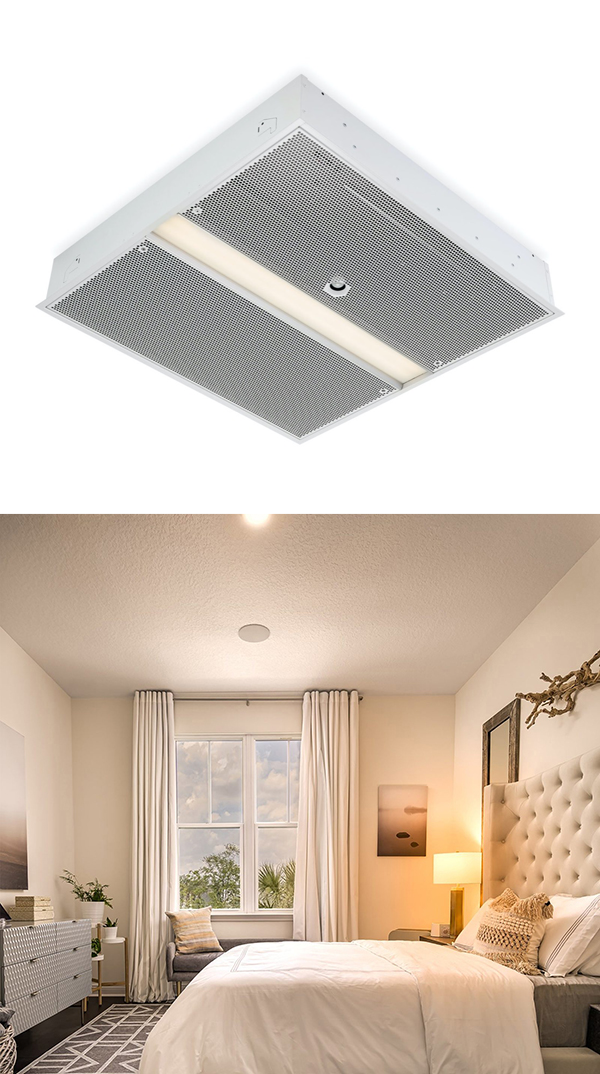
Then one day, in a meeting or party, I talked to some visitor who was American, and the guy saw my fascination about this and he said: “why don’t you write a letter to the embassy, to the Navy detachment, or the Navy detail, in the American embassy in Chile?” So, I hand wrote a letter saying, “Dear to whom it may concern, I am fascinated with the planes, and I am really interested in visiting the aircraft carrier … etc” and then I mailed it. End of story. Two months later I received a letter from the embassy with two invitations to visit the carrier! It was SO cool! It really changed my life at that point, when you’re a kid and everybody is looking at you like, “You’re doing a stupid thing”. And then you get such a big payback, that shows you, “go for your goals, go for your dreams”, it doesn’t matter what the rest of the people think or say. I think that ought to be the motto of my life. I don’t believe in references. That was a very strong message, that I am always grateful for.
I went, I visited. At that time security was not as tight as now because it was before September 11. I was certainly no more than fifteen.
Then my education, I ended up doing mechanical engineering. It was what made more sense to do in Chile, even though I wanted to do aerospace, but it didn’t exist, so I studied mechanical engineering. I was lucky enough to get into the best engineering school in Chile which was pretty good. After I moved to the U.S. and I did my Ph.D. I realized that my early education in Chile was superb, the level of rigorousness in math and basically on the core classes was excellent. Also, while I was doing my engineering, the astrophysics department started an astrophysics minor. I was in the first cohort of that newly created minor.
What University did you attend?
It’s called the Catholic University in Chile. The Vatican sponsored several universities in Latin America. I did my minor in astrophysics and at the same time studied mechanical engineering. That was also a defining moment in my career. I didn’t dare to do the leap, just moving to pure astronomy, because of the typical family questions “how are you going to become an astronomer? How are you going to eat?”. I did the minor as a good middle point and it’s proven to be excellent because the rest of my career has always been on the edge between science and technology, and it’s an edge that I love. I get to do the science, enjoy the science, and I get to drive that science requirement into technology, which I also enjoy a lot, I like to be a hybrid, being a hybrid has catapulted my career and made me happy.
For my last year as an undergrad, I came as an exchange student to UC Berkeley. I spent six months in Berkeley doing mechanical engineering. I got A+ on all the classes, and I did all the classes I couldn’t do in Chile, such as Introduction to Aerodynamics, and I had a blast. Berkeley was really an awesome experience. I made friendships that still are my best friends. They’re scattered all around the world because I was staying at the International House, which is the housing facility for international students. It was really an honor.
Also, my engineering school in Chile included an MBA program on engineering because it seemed at that time that there was not so much technology in Chile. They were thorough on business education, they will train you not like a formal MBA but we had six classes on management, accounting, marketing, company organization. It was very good and has helped me a lot in my life because I realized that you know the terminology, you know the basics, people perceive you not only as a scientist, but as somebody who understands how business works, and that is very important.
I finished my education with a minor in mechanical engineering, this MBA degree and a minor in astrophysics. And then I started my own company, www.yxwireless.com, a company in Chile that made hardware for telecommunications. At that time, it was the beginning of Skype and the VOIP. We designed and manufactured devices that are called Voice over IP gateways. The goal is to connect a call that is being transmitted over the internet to normal telephonic devices. For that, you need to use an interface. We were building those interfaces, and we did pretty well. Now the company has offices in Latin America. I sold all my shares a long time ago so I don’t have any interest in the company, but still, I am a co-founder so it feels like my company, and when I go back to visit, my other co-founders are still working there.
Anyway, after I left the company I wanted to go back to science. A job position came out at the VLT, which is the Very Large Telescope that is owned by the European Union, at the Atacama Desert. It’s the largest telescope in the world, together with Keck, depends on who you ask. There was an instrumentation engineer position, which takes care of the instrument, to make it ready for the night. I spent five years there at the Atacama Desert. It was one of the best periods of my life. I had a blast, because I was in the desert next to the mountains, next to the sky, and I had my small amateur telescope. We lived in an underground hotel, actually, the place where we lived was featured in a James Bond movie, called Quantum of Solace, as the headquarters of the bad guy. It’s a complete hotel underground. Outside it is 2% humidity on the driest desert on Earth, inside there are tropical plants, a pool among other interesting facilities. I was there when they filmed. Daniel Craig [was there] and we showed him the facilities. It was a lot of fun for a week. They brought helicopters and all kinds of movie hardware.
I was becoming super specialized on hardware. I did really well there, and they gave me more responsibility. I became the instrument engineer responsible for systems in Europe. I spent time between Chile and Europe, commissioning instruments in Europe and then doing their acceptance in Chile. But after five years there I realized that without a Ph.D. I was going to be locked for life in the observatory as an instrumentation engineer because if you become so specialized on a job, you won’t have another job in Chile. I was enjoying my life, but I could see a dead end. Also, I was in a situation in which I was fascinated by the engineering, the technology, and the optics but I lacked a fundamental understanding of the principles.
So, I said “I’m done. I’m going to do my Ph.D. and understand what’s going on.” I decided to do my Ph.D. not in astrophysics, but in optics because that was the fundamental element, the missing piece. There were the astronomers, the mechanical engineers, the computer scientists, but really the enabling technology of all this is not the mechanical engineering, is not the computer science, it is the optics!
I applied for the Fulbright Scholarship and got the Fulbright Science & Technology award, which consisted of support for one person per country per year. Every year there was a cohort of 44-45 people, we have a really interesting network. During that process, I moved to the University of Arizona, which has the best school of optics in the US. Well it depends, Rochester is better on lens design, the UofA is better on large meter telescopes, and the University of Central Florida is better in photonics. Those are the three big optics centers, depending on what you want to do. I don’t like when people say, the UofA is the best; no, but I think it is stronger in some aspects.
During my Ph.D., I met Olivier Guyon, a French professor at the university who also worked in Hawaii at the Subaru telescope. He said “Eduardo, do you want to work with me on a grant for technology development to detect exoplanets? And I said, “Hell, yeah, let’s do it!” I started to work with him, we got good papers, and actually, the technology that I started there with my Ph.D. is the reason I got the NASA Exceptional Technology Achievement Medal.
I was really happy doing my Ph.D. After ten years out of school, I came back to school and I started with electromagnetism graduate level class, vector calculus, and all the hard math. It was rough but I did appreciate the theory and the classes. Finally, the lack of knowledge that made me feel a little bit like I was not at the same level as the other guys in Germany or in Europe was over.
Then I joined here as an NPP.
Tell us about that and then your work here at Ames.
My NPP period was to continue my Ph.D. work. During the NPP I applied for a NASA ROSES Technology Development for Exoplanet Missions grant. I proposed to enhance the laboratory that I started at UofA and to continue what I was doing at my NPP. I got a fairly large grant to do that, that’s when I became contractor here, with my own funding to continue that job.
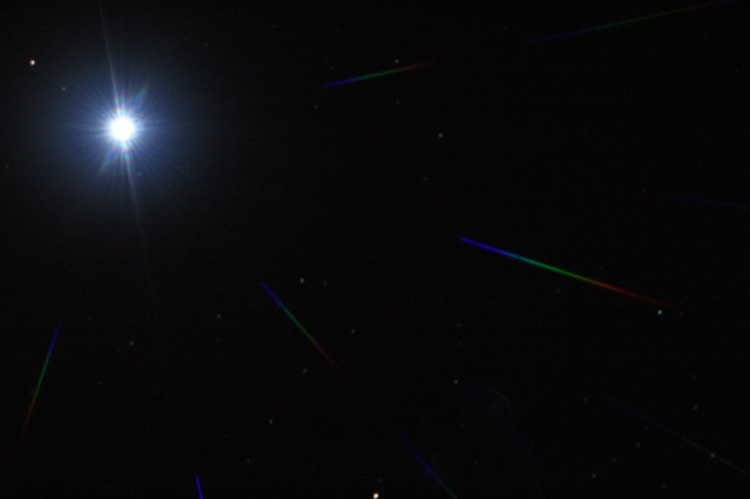
Also, I got involved in other projects that Rus [Belikov] was doing, high contrast imaging, coronagraph. We started to work on combining the coronagraph with astrometry, to improve exoplanet yields and the efficiency of missions. I started to work on several different projects, also my mechanical engineering side came out, and I started to work on other deployable telescope concepts.
With Rus, we worked really hard on developing technology to detect planets around Alpha Centauri, which is the nearest star system to ours. We have been developing different mission concepts, flavors, ideas, of how to answer the question: is there a planet around Alpha Centauri or not?
I think that one of my strengths is also a weakness, I get motivated and excited about most of the ideas related to technology. But this also shoots me in the foot because I get distracted. It’s hard to keep a good balance, stay focused and at the same time keep your radar on. At least I can say that I am aware of it.
At Ames now, my work is mostly on developing new technologies for exoplanet imaging, for the coronagraph. We’re working on a mission proposal for imaging planets around Alpha Centauri.
The coronagraph is the device that allows us to block the light of a star and see a planet. That coronagraph can be implemented on multiple missions: we’re working for instance on WFIRST and HABER. We’re maturing the technology.
Tell us about your typical day.
I live in San Francisco. I wake up, take my bike on the Caltrain, bike here to Ames. Then I work the whole day on different projects and spend a significant amount of time in the lab. Normally I divide, either the afternoon or the morning in the lab, the rest in the office doing optical design and writing papers.
When I can, I try to go running at noon, next to the runway. I love to run next to a runway, it’s really beautiful, in winter around noon, in summer after work when there’s still sun. Then I go back home.
What do you like best and least about your job?
What I like the best is all the opportunities that you have to develop ideas, to work on projects, to talk to people, to get involved on the most advanced stuff in the world, that’s what I like.
What I like the least, it’s the byproduct of the first, a consequence of what I like the most: Not clearly defined priorities. While I have the freedom to explore, to propose, I also have to be my own manager on what I need to responsibly do, related to the agency goals. Sometimes it’s hard, it requires effort to keep track. I think that sometimes the desire to stay funded may not be exactly aligned with the best interest and efficiency of the goals for the Center. I think that this is a problem that happens to most researchers, especially contractors: you’re trying to live the day, but you need to make a conscious effort to maintain a good balance and to reassess when needed, and ask people what they think of that balance.
Who or what inspires you?
It’s an interesting question. I’ve been fascinated by engineering feats. It might sound weird, but let me explain what I mean. When I was a young adult I had the opportunity to be around famous people for some circumstances, and I didn’t care, I couldn’t even recognize them.
I’m fascinated by the achievements of people. Let me give you an example if you look at a Boeing 777-300, which has the largest turbine in the world. If you look at the composite blade of the fan of the engine, it’s a piece of art. It’s a beautiful blade, it is swept back and forth and it has a titanium leading edge, a carbon fiber blade, and it’s the result of thousands of engineers and also business people trying to make something extremely efficient and commercially valuable. That’s what fascinates me. Why do those people have to be anonymous? Why do famous people have to have more rewards than those amazing teams? I care about what we can achieve together.
All those thousands of unnamed people, they have fascinating lives, they have very interesting thoughts, and incredible creativity to achieve what they have done.
What advice would you give to someone who is younger and would like to pursue a career like you have?
The best advice also comes with a warning: Follow your dreams and whatever drives your passion.
But, there are two more elements to this. The second one is perseverance. Many times, I talk to people and they get really excited, when I do outreach in Chile and here. Then two weeks after they forget and you wasted time trying to get them engaged.
Every time that people ask me this question, I say dream and perseverance, they go together.
And here comes the warning: Know when to stop. Because if you’re unreasonably stubborn, you may go in the wrong direction and you may waste a lot of time. Perseverance doesn’t mean irrational stubbornness. I think a lot of people fall into that trap. You have to be able to know, at some point, not to give up, but to steer the course of things.
What do you do for fun?
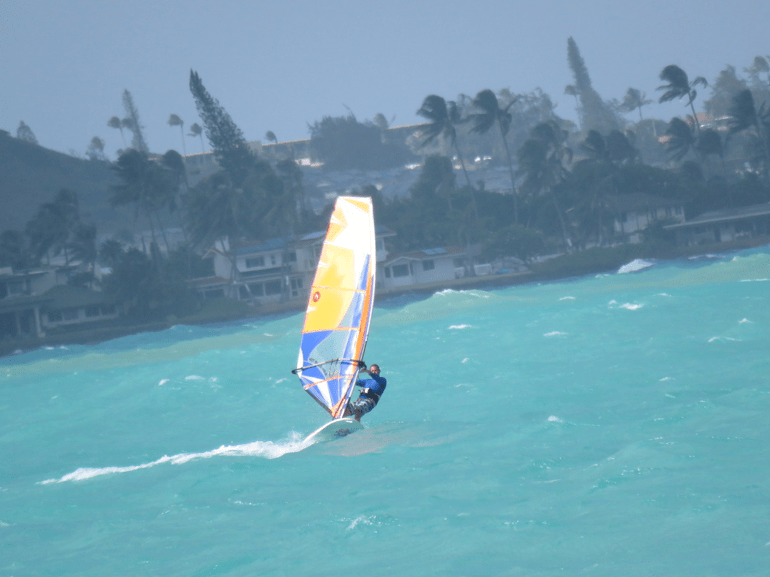
I love windsurfing and the Bay Area is fantastic for that. The fact that you can just go in the water and sail superfast over the waves. I go sailing next to Coyote Point, near highway 101 when you go towards San Francisco airport, right before getting to the airport, there’s a little beach. Imagine the situation, just gliding over the water with the beautiful view of the bay and then you see a 777-airplane flying on top of your head! Oh man, it doesn’t get better than that!
Also, I like to fly radio control planes, I have a sailplane, a high-performance carbon fiber glider. I like gliders that you fly with slope wind, you use that wind as energy to keep flying, I can be hours flying. Last week I went flying at Fort Funston in San Francisco. Watching the ocean at the edge of a cliff I could see whales migrating. What can be more beautiful, enjoying the plane in silence, not engine, not energy wasted, just enjoying the wind and watching whales. It’s very special.
Is there anything you might want to tell us about your home life, family, pets, or kids, anything.
I come from a family of six. Three brothers and one sister. I’m the youngest by far, seven years younger than the next one, I grew up in a very social environment always surrounded by people, by the friends of my brothers and sister, a very social family. When I moved to this area I missed a little of that. I got married to Alba, she’s from Barcelona, Spain, and over there the lifestyle is very similar to mine: lots of food, very social, so we try to keep that with friends, we like to enjoy social life. But I also like to go windsurf or flying the plane, it gives me so much energy, it changes my mood to be a positive person. I like to spend a significant time doing the things that make me happy.
We don’t have kids or pets, at some point, we may in the future.
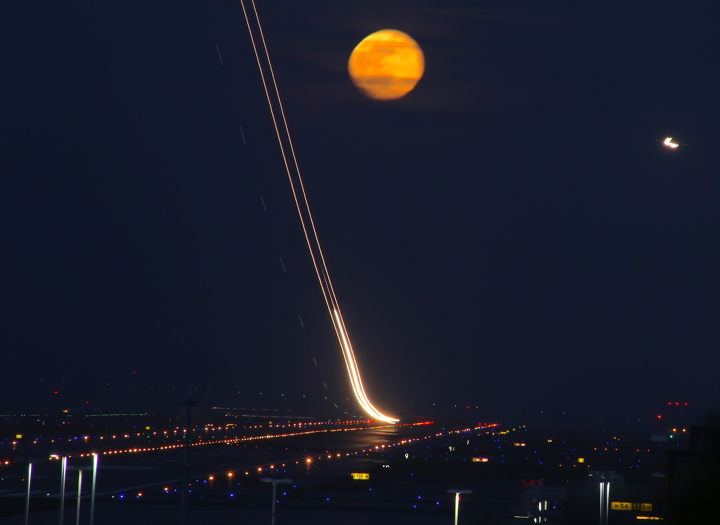
Favorite image.

The image was taken by my student Nour Skaf. Credits: Nour Skaf
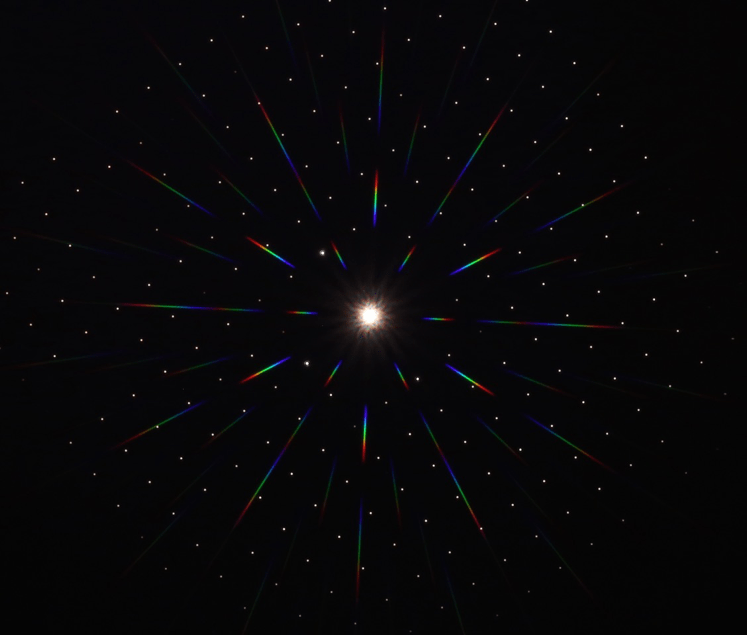
Favorite quote: “I could either watch it happen or be a part of it” Elon Musk

























